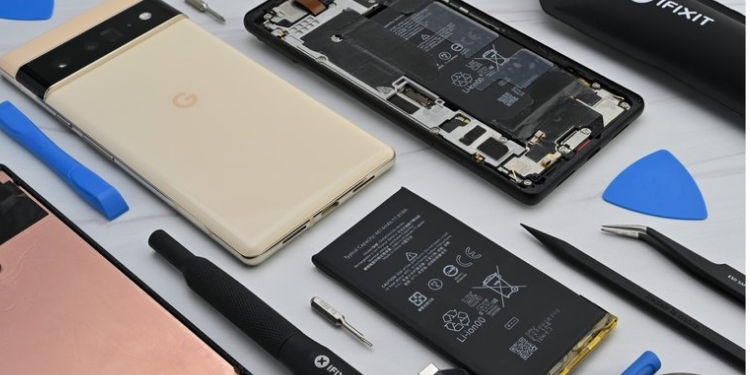Google’s Pixel phones are renowned among Android enthusiasts for their sleek software, robust performance, and regular updates. However, a recent discovery by YouTuber Louis Rossmann has raised eyebrows about Google’s repair practices. Reports suggest that Google’s official repair policy allows the company to confiscate Pixel devices sent in for repair if they contain non-OEM (Original Equipment Manufacturer) parts, igniting a broader conversation about the right to repair.
The Right to Repair Movement: Advocating for Consumer Choice
The right to repair movement champions consumers’ freedom to choose where and how they repair their electronic devices. Advocates argue that consumers should have the option to use third-party repair shops or even fix their devices themselves. By restricting repairs to manufacturers or authorized stores, critics claim that it creates a monopoly, drives up repair costs, and stifles innovation in the repair industry.
Deciphering Google’s Repair Policy
Google’s service and repair terms and conditions state, “You will not send in a Device containing non-Google-authorized parts – if You do, Your Device will not be returned to you.” While this statement appears straightforward, it has sparked criticism from those who believe it unjustly limits consumer choice and penalizes users who opt for third-party repair services, which may offer quicker turnaround times or more budget-friendly options.

The Grey Area: Defining “Authorized” Parts and Repairs
The controversy surrounding Google’s policy lies not only in its existence but also in its potential for misinterpretation. The term “non-Google-authorized part” is ambiguous. Does it refer exclusively to parts manufactured by Google, or does it also include reputable third-party components that adhere to the same quality standards?
Moreover, the policy fails to differentiate between skilled, qualified repair shops and those providing substandard services. Under Google’s current policy, a Pixel phone repaired with high-quality, compatible parts by a proficient technician could still be confiscated simply because the parts were not sourced directly from Google.
Balancing Security Concerns and Consumer Rights
Google defends its policy by pointing to security concerns, arguing that using non-OEM parts could jeopardize the device’s integrity and security. For example, a poorly manufactured battery could pose a fire hazard by overheating.
However, critics suggest that Google could address these concerns by establishing clear guidelines and certification programs for third-party parts and repair shops. This approach would ensure a degree of quality control while still allowing consumers the freedom to choose their preferred repair options.
A Broader Perspective: The Global Right-to-Repair Landscape
Google’s policy is not unique. Many electronics manufacturers, such as Apple and Samsung, have similar restrictions on repairs using non-OEM parts. This underscores the need for a wider discussion about right-to-repair laws and regulations. Several countries, including the European Union, have already passed legislation that grants consumers greater control over how they repair their electronic devices.
Potential Solutions: Legislation, Education, and Transparency
To address the right-to-repair issue, several potential solutions have been proposed:
- Legislative Action: Right-to-repair advocates are urging for legislation that would require manufacturers to make repair manuals, parts, and tools readily available to consumers and third-party repair shops.
- Consumer Education: Consumers must be informed about their rights and the potential implications of using non-OEM parts for repairs.
- Transparency from Manufacturers: Manufacturers like Google should be more transparent about their repair policies and provide clear guidelines for acceptable third-party parts and repair practices.
Navigating the Future: Striking a Balance
The right-to-repair debate surrounding Google’s Pixel phones is a reflection of a broader challenge. Finding the right equilibrium between security concerns and consumer choice is paramount. Through open dialogue, legislative action, and a commitment to transparency from manufacturers, we can work towards a future where consumers have the freedom and resources to maintain their devices safely and effectively, regardless of their chosen repair provider.
As the right-to-repair movement gains momentum, it is crucial for companies like Google to adapt their policies to align with consumer expectations. By fostering a repair ecosystem that prioritizes both security and choice, we can create a more sustainable and consumer-friendly future for our electronic devices.
















Add Comment